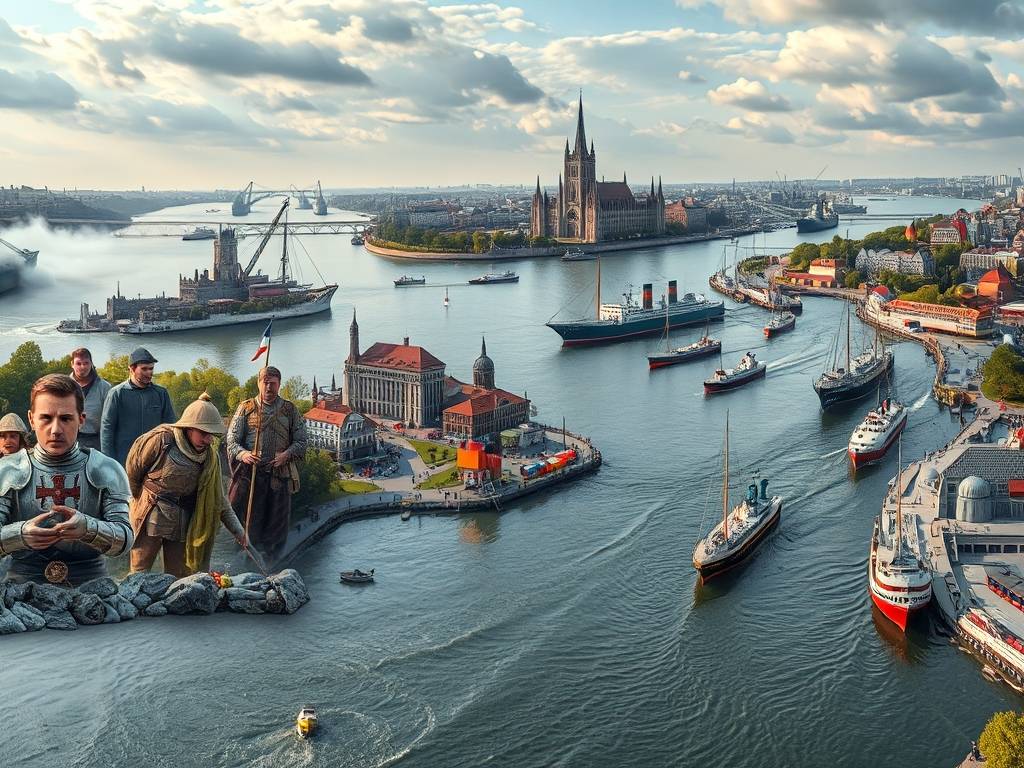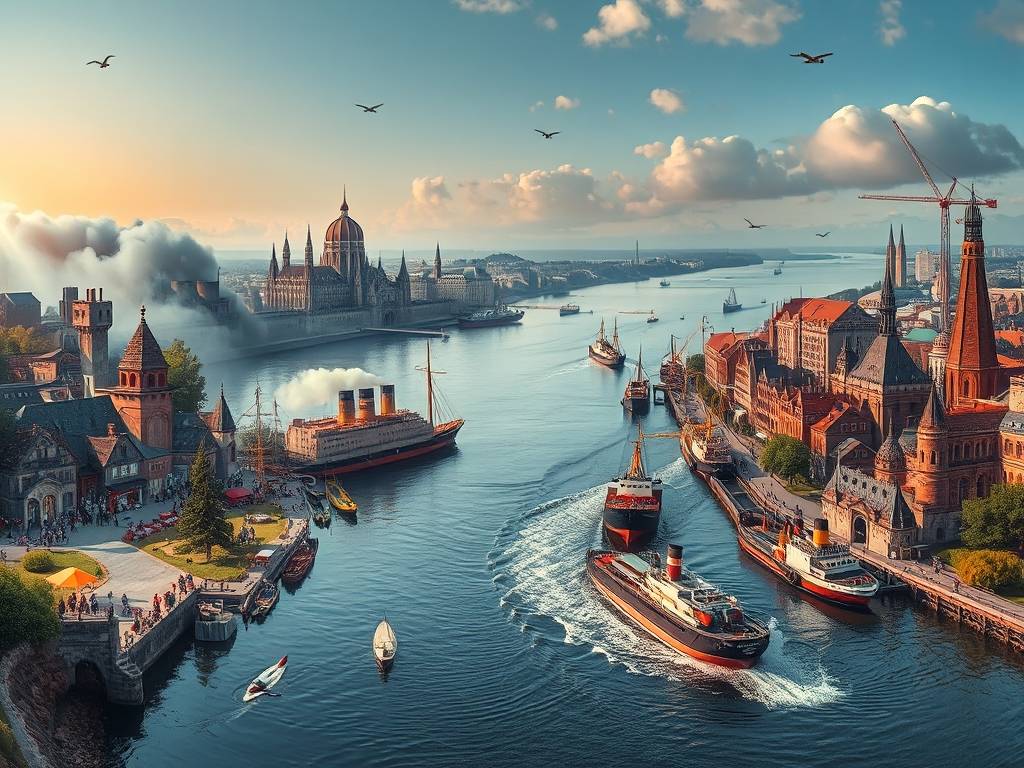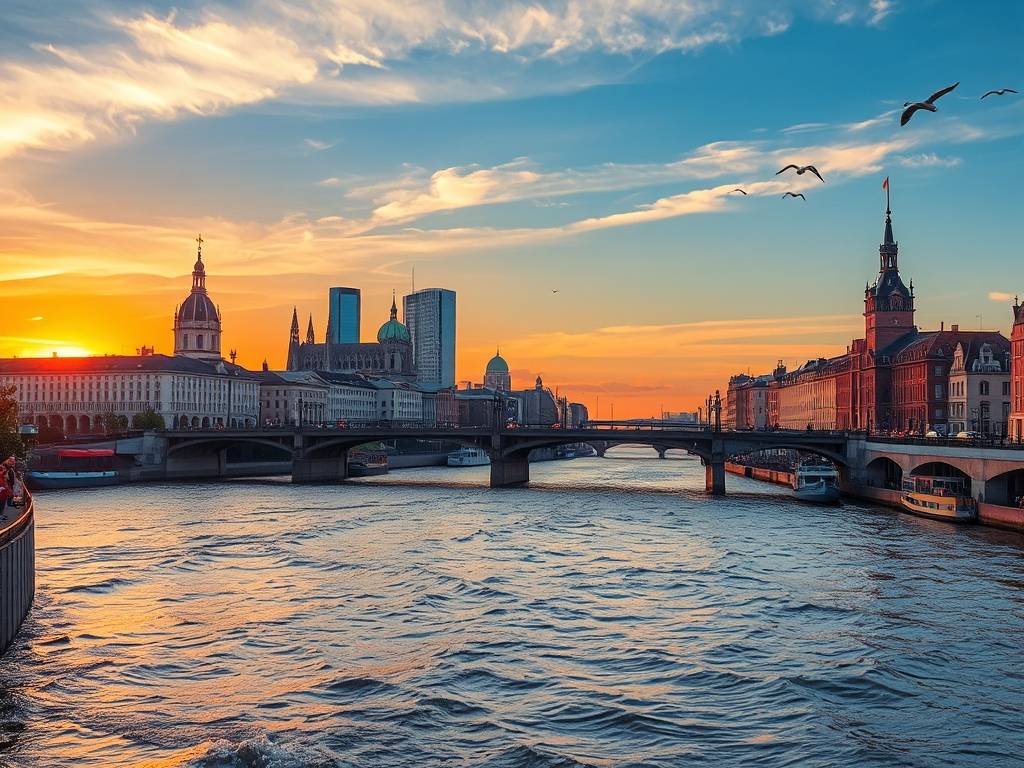Global Travel Information
Elbe River Historical Significance: Key Events Through Time
The Elbe River: A Liquid Chronicle of Europe's Turbulent Soul
Winding its way through the heart of Europe, from the rugged peaks of the Czech Republic's Krkonoše Mountains to the vast, windswept shores of the North Sea in Germany, the Elbe River is far more than a body of water. It is a silent, flowing witness to over a millennium of human drama. Its currents carry not just water, but the echoes of emperors and soldiers, of merchants and artists, of division and, ultimately, of reconciliation. To trace the historical significance of the Elbe River is to embark on a journey through the very soul of European history, understanding how this major European waterway shaped cultures, decided the fates of nations, and became a powerful symbol of both conflict and unity.
The story of the Elbe, or Labe as it's known in the Czech lands, begins in the mists of early European history. For ancient tribes, it was a boundary and a source of life. However, its role as a central artery of power and commerce truly crystallized during the Middle Ages. The rise of the Holy Roman Empire saw the Elbe become a vital corridor for trade and expansion. It was along its banks that key settlements flourished, evolving into the powerful cities that would define the region for centuries. The founding of Hamburg in the 9th century, strategically positioned near the river's mouth, is a prime example of the early settlements along the Elbe leveraging its potential. Hamburg’s subsequent entry into the Hanseatic League transformed it into a Northern European powerhouse, its wealth and influence flowing directly from the river that connected it to the interior. Upriver, cities like Magdeburg and Dresden grew into magnificent centers of art, architecture, and political power, their grandeur funded and facilitated by the river trade. This era cemented the Elbe's status as a crucial trade route in Central Europe, a liquid highway for salt, cloth, and herring, binding diverse cultures and economies together.

The river's strategic importance made it a focal point during periods of conflict, most notably the Thirty Years' War and the Napoleonic Wars. Armies marched along its valleys, fortresses were built to control its crossings, and its control often meant the difference between victory and defeat. Perhaps one of the most pivotal key events on the Elbe River occurred in the early 19th century. On a fateful day in 1813, near the end of the Napoleonic Wars, the combined forces of Russia, Prussia, Austria, and Sweden decisively defeated Napoleon's army at the Battle of Leipzig. In the war's final act, the subsequent Battle of the Nations forced the French Emperor into a desperate retreat, a flight that involved a harrowing crossing of the Elbe. This period profoundly demonstrated the river's role as a military and strategic barrier in European history.

As Europe industrialized, the Elbe adapted to a new age. The 19th century saw the expansion of its navigability through canals and locks, further enhancing its economic might. Paddle steamers began to churn its waters, and the ports of Hamburg and, to a lesser extent, Dresden, buzzed with unprecedented activity. The river became the lifeblood of the Industrial Revolution in the region, transporting coal, manufactured goods, and raw materials. This era also saw the Elbe's romantic appeal captured by artists of the German Romantic movement. The stunning landscapes of Saxon Switzerland, where the river cuts through dramatic sandstone cliffs, became a subject of awe and inspiration. Composers and writers, drawn to its serene beauty, helped forge a cultural identity around the river, creating a unique blend of natural splendor and human endeavor that defined the Elbe River's role in European trade and culture.
However, the 20th century inflicted deep scars upon the river and the nations it connected. The Second World War saw its bridges targeted and its cities, particularly Hamburg and Dresden, devastated by aerial bombardment. But it was in the war's dying days that the Elbe hosted an event of profound symbolic hope. In April 1945, as Allied forces closed in on Hitler's Germany, American and Soviet troops met at the river near Torgau. This "Elbe Day" encounter between Allied forces was a moment of celebrated camaraderie, handshakes, and smiles, symbolizing the imminent defeat of Nazism. Photographs of American and Soviet soldiers shaking hands on the damaged Elbe Bridge circulated globally, representing a fleeting moment of unity and peace.
Tragically, this unity was short-lived. The Cold War almost instantly transformed the Elbe from a symbol of alliance into the very embodiment of a divided world. The river now marked part of the Iron Curtain, the stark border between capitalist West Germany and communist East Germany. For decades, the once-vibrant waterway was severed. The free flow of people, goods, and ideas was replaced by watchtowers, patrol boats, and minefields. The impact of the Elbe River during the Cold War was profound; it became a frozen frontier, a "no-man's land" where communities that had lived and traded together for centuries were brutally separated. This period represents one of the darkest chapters in the river's long history, a time when its historical significance as a political and cultural divider was painfully amplified.
The fall of the Berlin Wall in 1989 and the subsequent reunification of Germany in 1990 heralded a new beginning for the Elbe. The barbed wire and barriers were torn down, and the river was once again reunited. The joy of this reunification was deeply tied to the river itself—it was no longer a border but a bridge. The legacy of the Elbe River in shaping modern Europe is perhaps most visible in this transformation. In the post-reunification era, immense efforts have been undertaken to heal the environmental wounds inflicted by decades of industrial pollution and neglect from both sides of the former border. The Elbe River biosphere and conservation efforts have become a top priority, aiming to restore its ecosystems and ensure its health for future generations.
Today, the Elbe presents a multifaceted identity. It remains a vital commercial waterway, though its economic role has evolved. It is a cherished destination for river tourism, with countless cruise ships and cyclists along the Elbe Cycle Path exploring its scenic beauty and the historic cities dotting its banks. Travellers visiting the key cities and landmarks on the Elbe River, from the modern port of Hamburg to the baroque splendor of the rebuilt Dresden Frauenkirche and the medieval charm of Meissen, are experiencing a living history book. The river connects these places not just geographically, but through a shared, complex, and often difficult history.
From a tribal boundary to an imperial trade route, from a Napoleonic battlefield to a Cold War frontier, and finally to a symbol of European reconciliation and environmental renewal, the Elbe's journey through time is a powerful narrative. Its waters reflect the triumphs and failures of humanity. Understanding the historical significance of the Elbe River is to understand that geography is not destiny, but a stage. The Elbe provided the stage—a major European waterway—upon which the drama of history unfolded. Its enduring presence reminds us that while borders, ideologies, and empires may rise and fall, the river continues to flow, patiently waiting for humanity to learn from the past and chart a more peaceful, unified course, just as its own waters merge seamlessly with the sea.
相关文章
- Elbe River Hiking Trails: Scenic Paths Along the Waterway
- Elbe River Length & Source: Key Geographic Facts
- Cities Along Elbe River: Must-See Destinations in Germany
- Elbe River Water Level Today: Real-Time Updates for Boaters
- Elbe River Cycling Routes: Explore by Bike This Year
- Elbe River Wildlife Watching: Where to Spot Birds & Animals
- Elbe River Local Festivals: 2025 Events Not to Miss
- Elbe River Accommodation: Best Hotels Near the Water
- Elbe River Fishing Spots: Permits & Top Locations
- Elbe River Castles & Palaces: Historical Sites Along the Banks
发表评论
评论列表
- 这篇文章还没有收到评论,赶紧来抢沙发吧~


